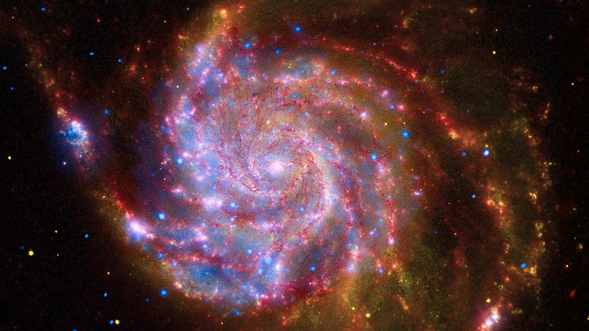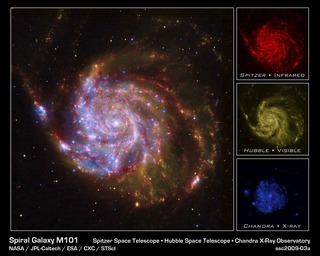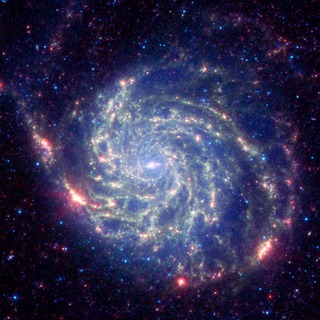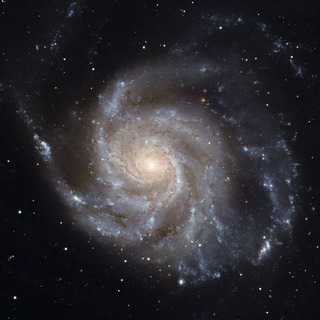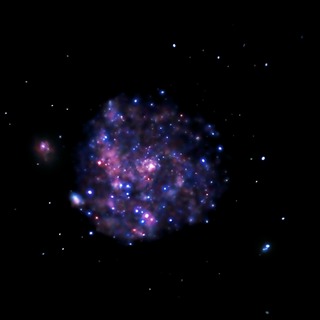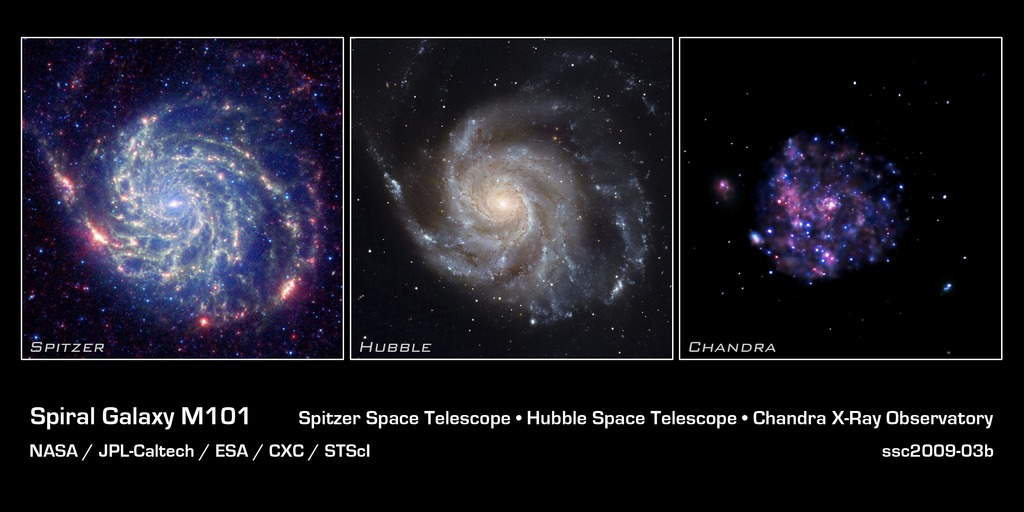
Credit: NASA, ESA, CXC, JPL, Caltech and STScI
Observation • February 10th, 2009 • ssc2009-03b
ssc2009-03b
The galaxy Messier 101 is a swirling spiral of stars, gas, and dust. Messier 101 is nearly twice as wide as our Milky Way Galaxy.
Spitzer's view [left frame], taken in infrared light, reveals the galaxy's delicate dust lanes as yellow-green filaments. Such dense dust clouds are where new stars can form. In this image, dust warmed by the light of hot, young stars glows red. The rest of the galaxy's hundreds of billions of stars are less prominent and form a blue haze. Astronomers can use infrared light to examine the dust clouds where stars are born.
Messier 101 has a pancake-like shape that we view face-on. This perspective shows off the spiral structure that gives it the nickname the Pinwheel Galaxy. In this Hubble image [middle frame], taken in visible light, the bright blue clumps are regions where new stars have formed. The yellowish core consists mainly of old stars. The dark brown dust lanes are colder and denser regions where interstellar clouds may collapse to form new stars. All of these features are shaped into a beautiful spiral pattern by a combination of gravity and rotation. Astronomers use visible light to study where and how stars form in spiral galaxies.
Chandra's image of Messier 101 [right frame], taken in X-ray light, shows the high-energy features of this spiral galaxy. X-rays are generally created in violent and/or high-temperature events. The white dots are X-ray sources that include the remains of exploded stars as well as material colliding at extreme speeds around black holes. The pink and blue colors are emission from million-degree gas and from clusters of massive stars. The pink emission indicates lower-energy X-rays and the blue higher-energy X-rays. One reason astronomers study Messier 101's X-rays is to better understand how black holes grow in spiral galaxies.
The International Year of Astronomy Great Observatories Image Unveiling is supported by the NASA Science Mission Directorate Astrophysics Division. The project is a collaboration between the Space Telescope Science Institute, the Spitzer Science Center, and the Chandra X-ray Center.
About the Object
- Name
- Pinwheel Galaxy • Messier 101 • M101
- Type
- Galaxy > Type > Spiral
- Galaxy > Activity > Normal
- Distance
- 27,000,000 Light Years
- Redshift
- 0.0008
